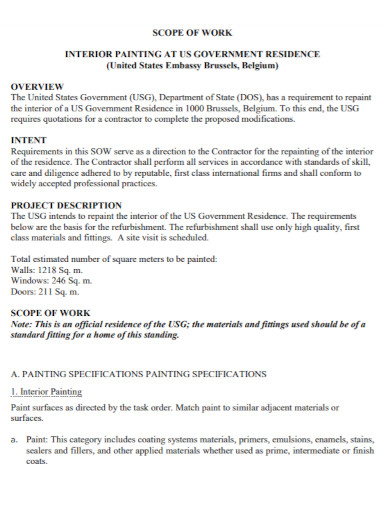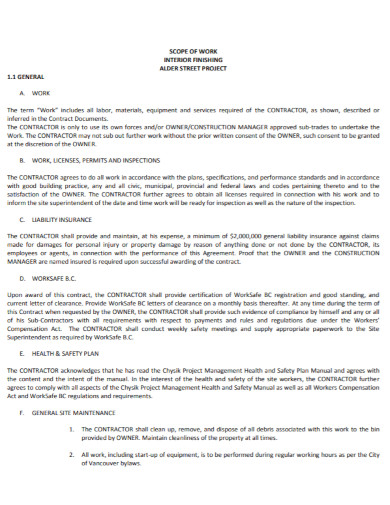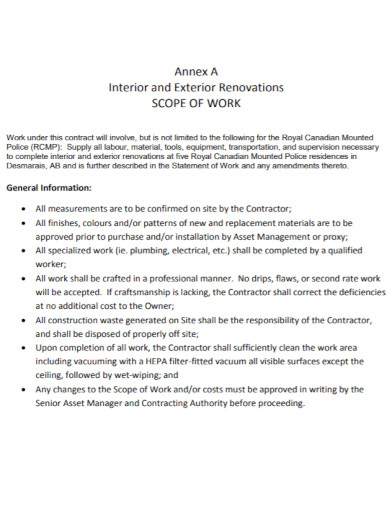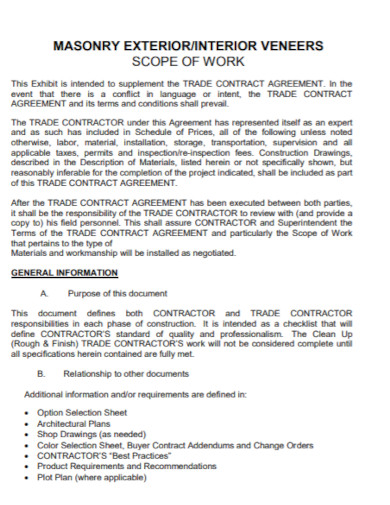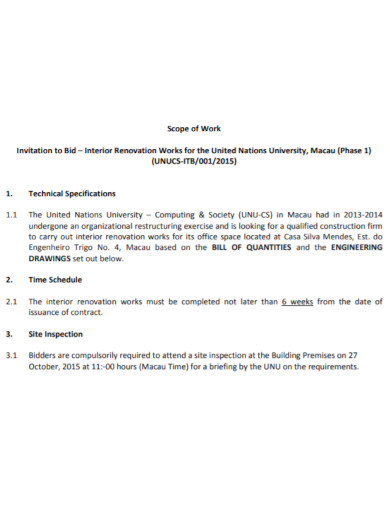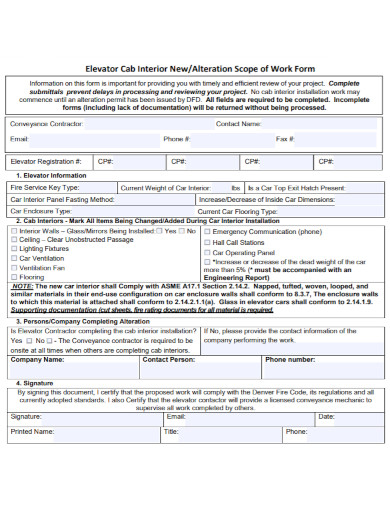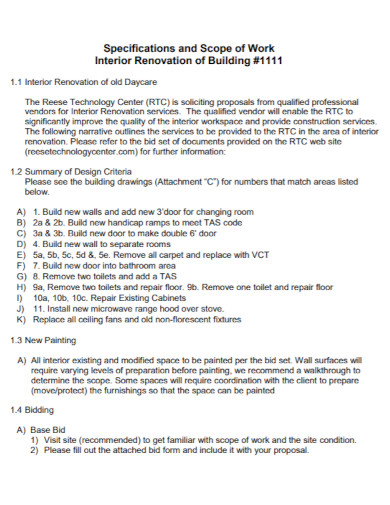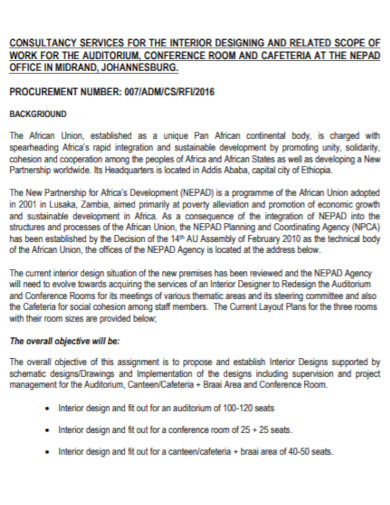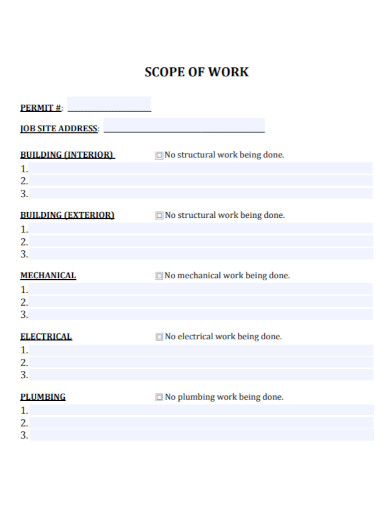10+ Interior Scope of Work Examples to Download
Sometimes it is very difficult to know what a person has to do or is responsible for in a given situation. The interior design scope of work is a document that will detail all the information required by the designer and the client.
10+ Interior Scope of Work Examples
1. Interior Painting Scope of Work
2. Interior Finishing Scope of Work
3. Interior Construction Scope of Work
4. Interior Renovations Scope of Work
5. Interior Rooms Scope of Work
6. Interior Exterior Scope of Work
7. Interior Scope of Work in PDF
8. Interior Scope of Work Form
9. General Interior Scope of Work
10. Interior Designing Scope of Work
11. Formal Interior Scope of Work
What Is an Interior Scope of Work
An interior design scope of work is a document that will indicate all the work responsibilities the designer will be responsible for in a specific project. Not only that, the interior design scope of work will act as a legal document for any issues that may arise during the project.
How to Write an Interior Scope of Work
The general interior design scope of work acts as a contract between the designer and the client will be subject to. This means that the interior scope of work for the interior designer will be a large subject of scrutiny, which indicates that it should be well-written and concise.
Step 1: Create An Outline or Open a Template
If you want to have access to or use an outline, interior scope of work template, or scope of work interior design example for your reference, you should do so. You can opt to use any of the following templates on the links above named: Interior Renovations Scope of Work, Interior Painting Scope of Work, Interior Rooms Scope of Work, and Interior Exterior Scope of Work.
Step 2: Write Down an Overview
Begin by writing an overview of the whole project or work. This overview should succinctly summarize the whole objective and goal of the project, and works as both a preface and an introduction for the whole document.
Step 3: List Down the Work, Responsibilities, and Schedule
After writing down the overview of the whole project, you must now list down the various work, responsibilities, and schedule the designer will have when they agree to the contract. Anything outside of the listed work actions and responsibilities, should not be included in the work of the interior designer.
FAQs
What is the scope of work of an interior designer?
An interior designer has a wide range of responsibilities and activities they have to do that are related to the arrangement and procurement of decorations and furniture to furnish the interior of a specific building or structure. The scope of the interior designer is to ensure that all the furniture and furnishings in the building are up to code, stylized, structurally sound, and out of danger. For example, an interior designer will be able to position all the furniture to a specified place and aesthetic without any risks of fire hazards or out-of-position furnishings. Not only that, but the interior designer is also responsible for the adherence to safety standards, building codes, blueprints requirements, and inspection.
What are the 7 principles of interior design?
There are seven principles in interior design that will serve as the foundation and framework for a detailed and cohesive interior design with a specific style or theme. The first principle of interior design is Unity, all the colors and elements of the furnishings inside a specific room should have a specific unified design element or theme. This will ensure that the room will have an individual identity when compared to all other rooms. The second principle of interior design is rhythm, this principle of design incorporates small nuanced repetitive styles and objects that will repeat to the room while increasing the uniqueness of said rooms. The third principle of interior design is scale and proportion, the items and objects in the room will need to have varying and proportional scaled objects that will complement each other. The designer will also have to ensure that the furnishings can accommodate the space for the room. The fourth principle is balance. This means that the furnishings follow a specific direction and harmony. The fifth principle of interior design is contrast. This principle focuses on the contrast and juxtaposition of colors, materials, and textures to create a visual impact on the observer when used alongside the next interior principle of interior design called emphasis. The final principle of interior design is called details, the interior designer should focus on the small details of each element and use them to create a clear image and theme for each room they are working on.
What is the 3 5 7 rule in decorating?
The 3 5 7 rule or the rules of three, is an interior design technique that incorporates or uses objects in groups of three to create an appealing, flashy, and memorable interior design. This also extends to other odd numbers like five, seven, and nine. This rule tries to create visual depth and contrast through the use of three or more odd numbers of objects in a specific space or room.
The Interior design scope of work is a contract or a written agreement that will try and concisely indicate to the interior designer their responsibilities and range of work in a specific project. When this agreement is written properly, it will serve as a great structure and starting point for both the designer and the designer’s boss. Therefore it is important to have a well-made interior scope of work.


![10+ Interior Scope of Work Examples [ Building, Rooms, Exterior ]](https://images.examples.com/wp-content/uploads/2021/08/10-Interior-Scope-of-Work-Examples-Building-Rooms-Exterior-.jpg)
